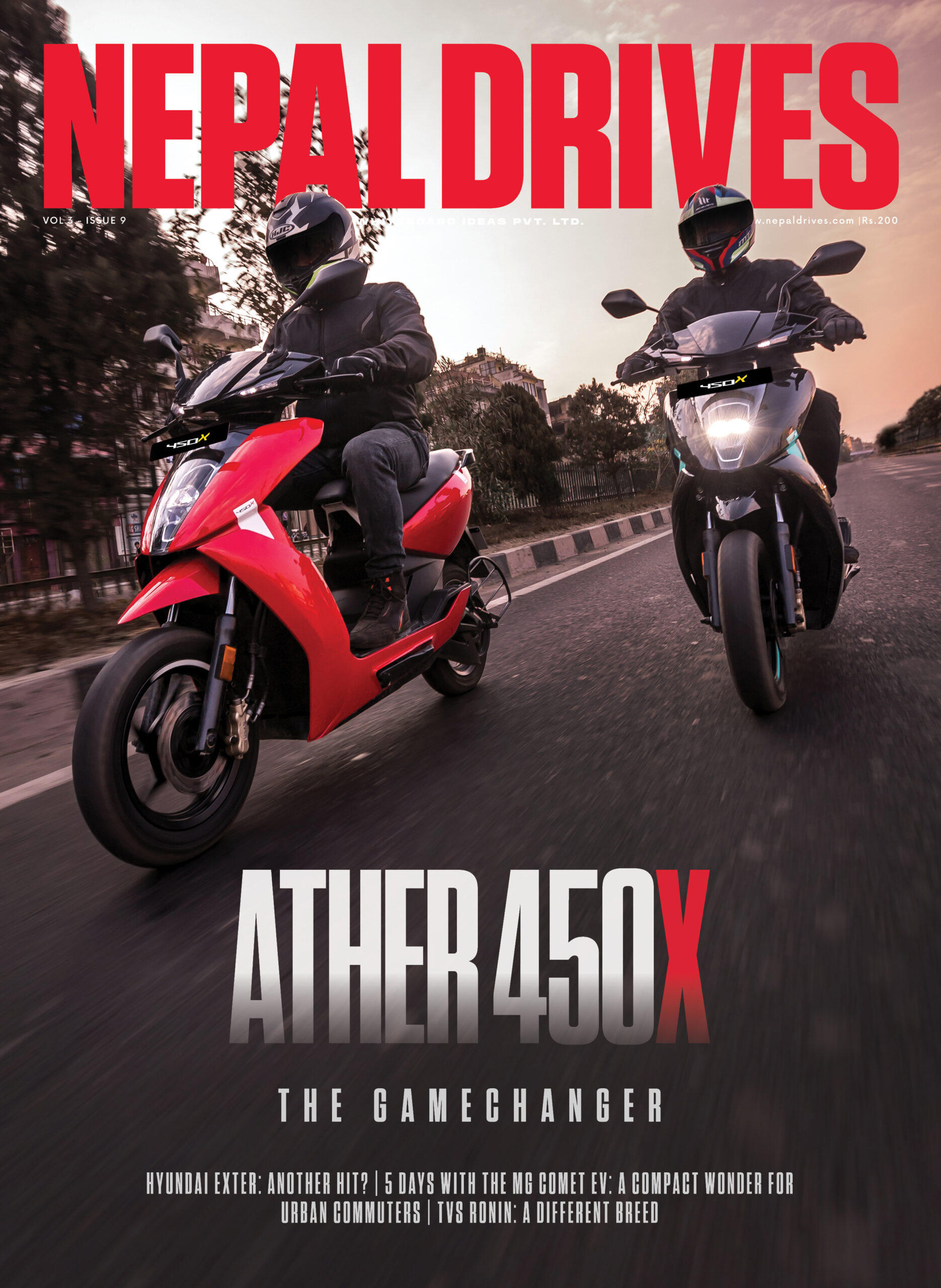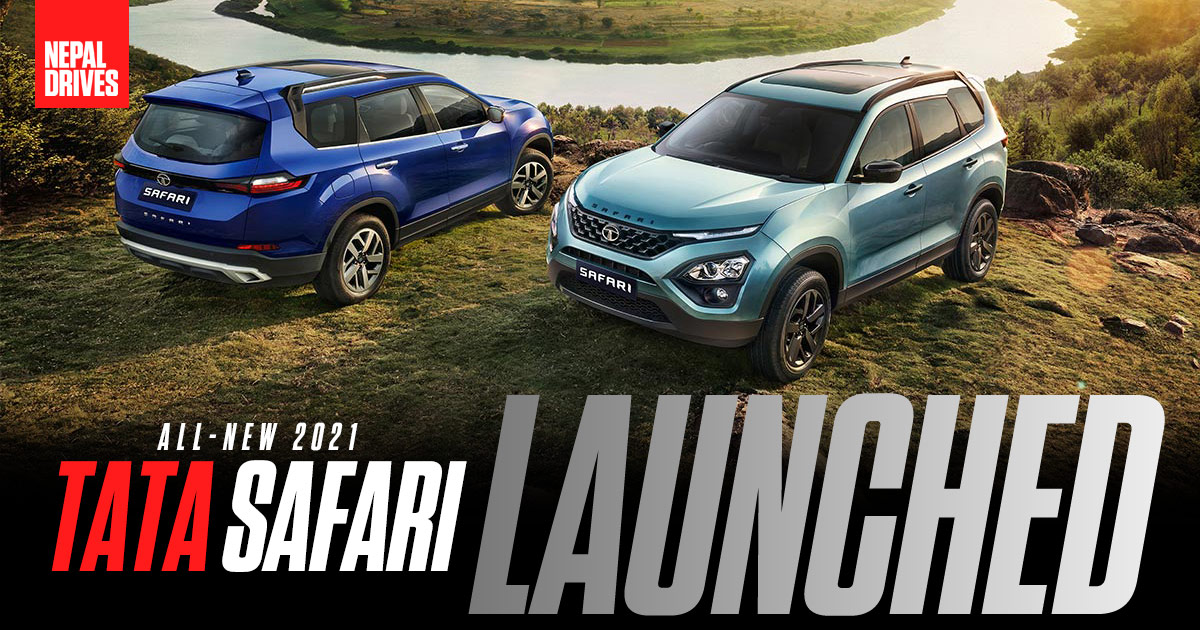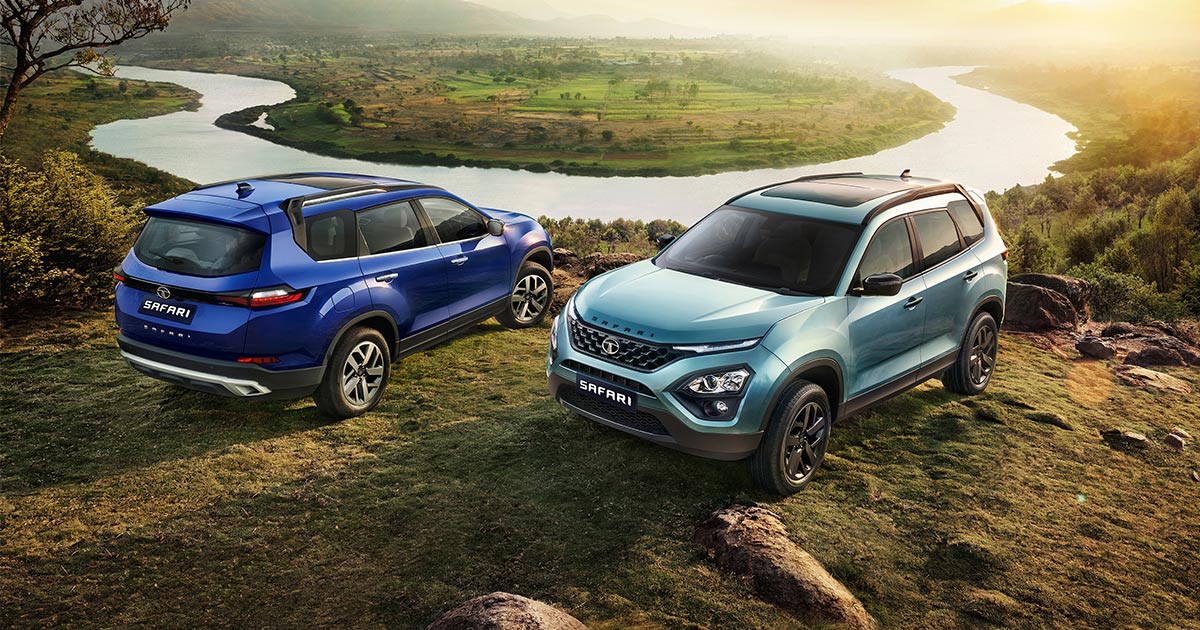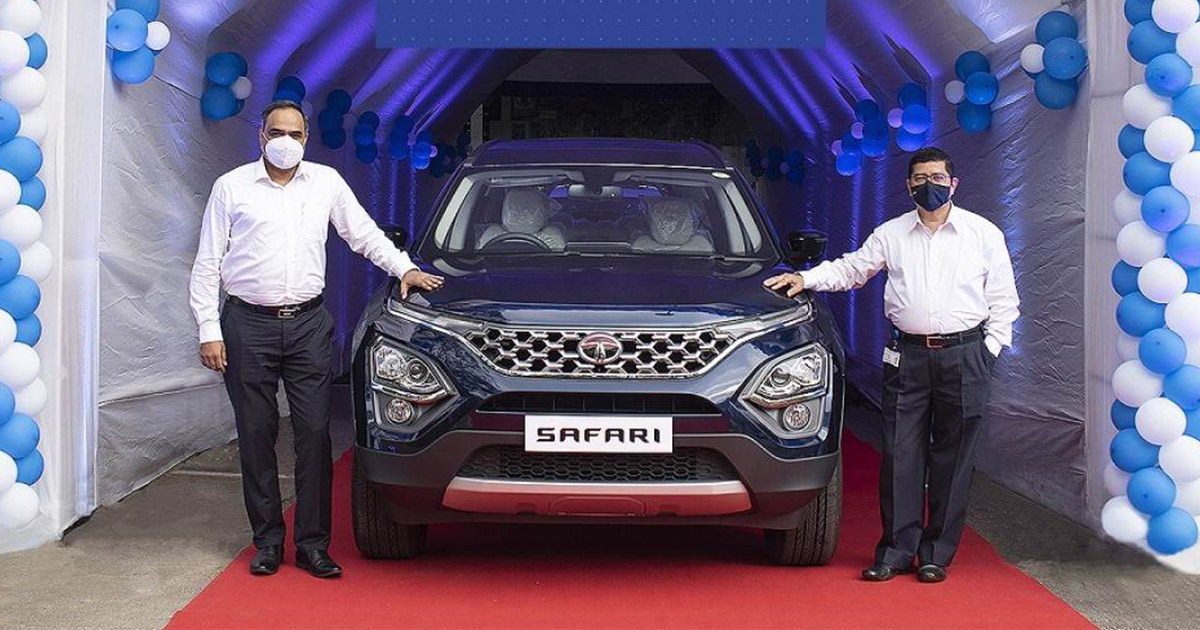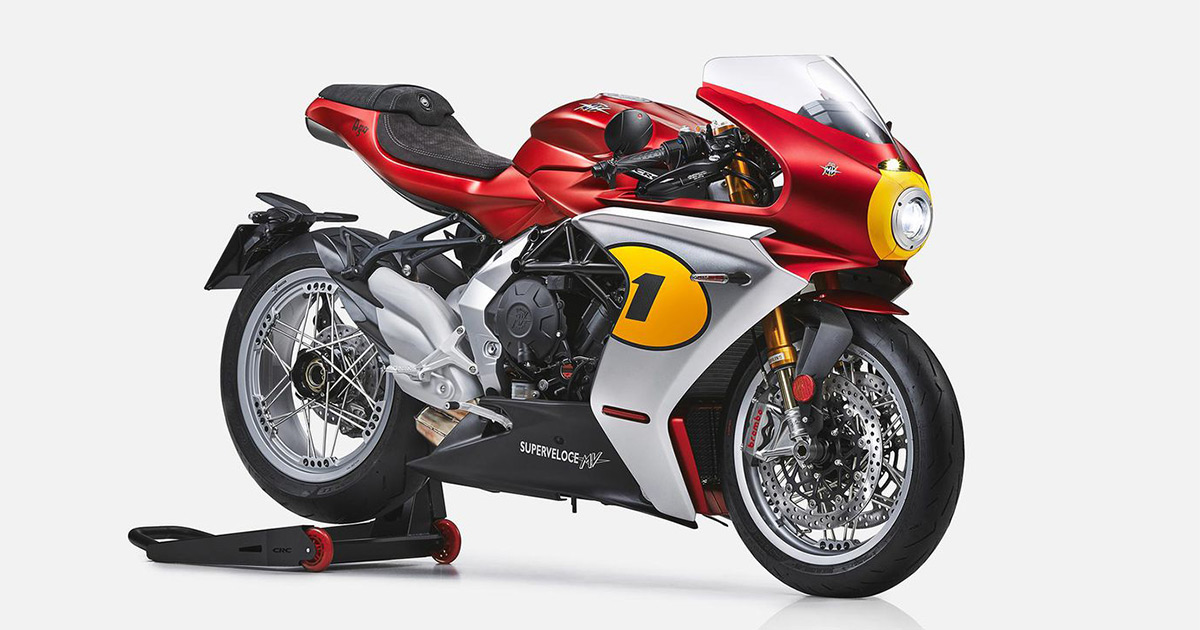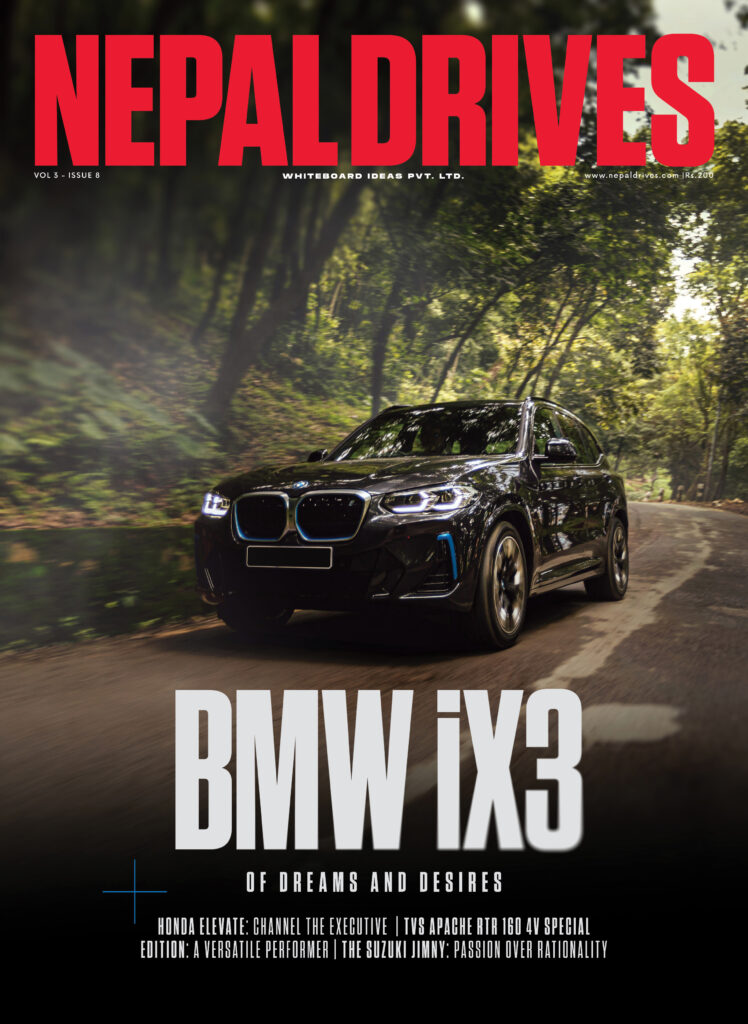All-New Tata Safari: Does It Live Up To The Name?
Share
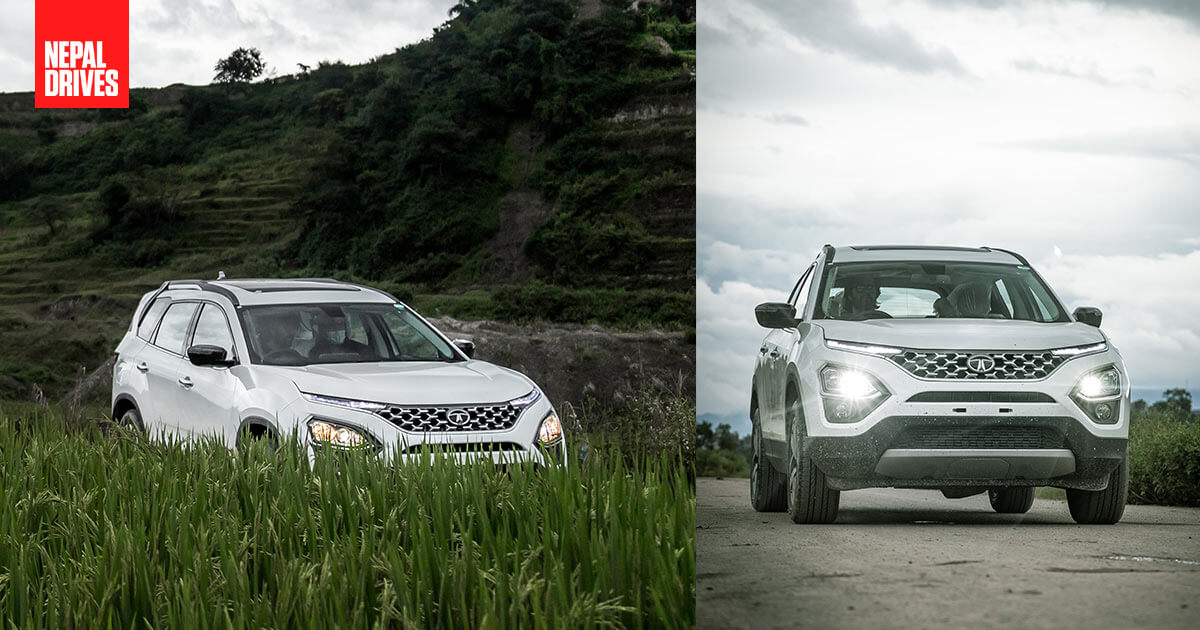


The Tata Safari is an iconic name in the Indian automotive scene. The first Safari saw the light of day in 1998, following the Tata Sierra and Sumo. Together, the trio pioneered the SUV segment in India, popularizing the term ‘Si-Su-Sa’ after the Sierra, Sumo, and Safari. In fact, the Tata Safari was the first 4WD SUV that was made in India which helped establish the Safari with auto enthusiasts in India.
Not only did the Safari pave the way as a pioneer in the segment, but it also managed to garner a strong following for itself. The rugged design, high ground clearance, and off-road capabilities made a strong case for the Safari. In time, the Safari went through its stages of updates with the Dicor series introducing fresh aesthetics and a bigger engine, and the Storme refining the Safari even further. The Tata Safari managed to prove its worth by serving the Indian Army. Tata Motors was commissioned by the Indian Army to produce special versions of the Safari Storme as the official vehicle for the Army. Named the GS800, it came with bullet-proofing and offered additional payload capacity, power and torque figures to conquer the rough trials and high-altitude roads for the Army.
It wasn’t long before the Safari nameplate found success in Nepali soil as well. In a market subjugated by Japanese SUVs, the Tata Safari managed to find success in the segment; even finding its way into the Nepal Army and Police fleet.
Unfortunately, with the emergence of other modern mid-size SUVs and the introduction of BS6 norms, the Tata Safari began to feel dated. Somewhere around 2019, the Safari nameplate was phased out. Since the Hexa was struggling to perform (now discontinued), there was a glaring gap in the 6-7 seater segment in the Tata roster. That was until the 2020 Auto Expo where the Tata Gravitas was showcased. Later, the Gravitas badge was replaced by the Safari nameplate, effectively resurrecting the legend. Now, the question is, does the new Tata Safari have what it takes to live up to the standards it had set in the past? We find out.
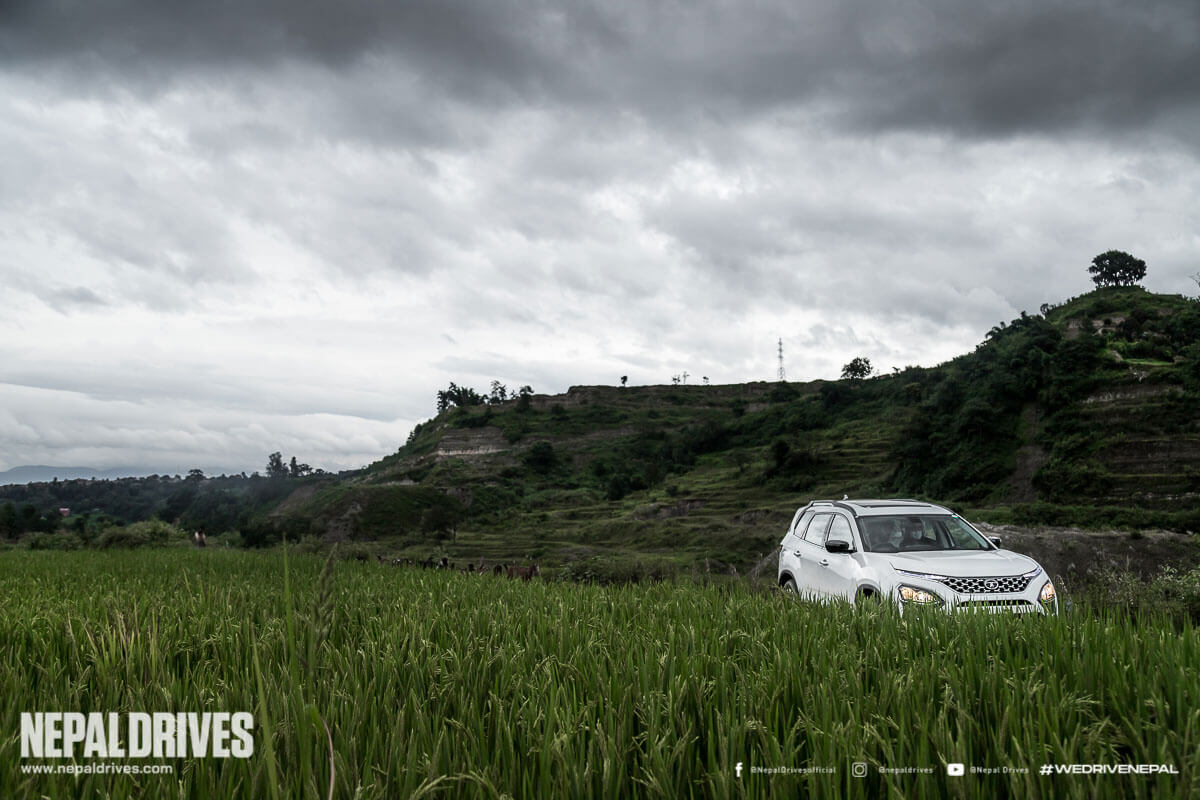
Design
If you think the Tata Safari looks a lot like the H5, you would be absolutely correct. The Tata Safari, at first glance, looks like an extended version of the Tata H5. And, like the H5, the Tata Safari is a stunner. Featuring Tata’s 2.0 Impact design language, the design remains contemporary and stylish. The front fascia is pretty much the same as the H5’s except for a lot more chrome usage. Other changes come in the form of chrome tri- arrows replacing the black arrows in the grille, and a revised housing for the Xenon HID projector headlamp cluster.
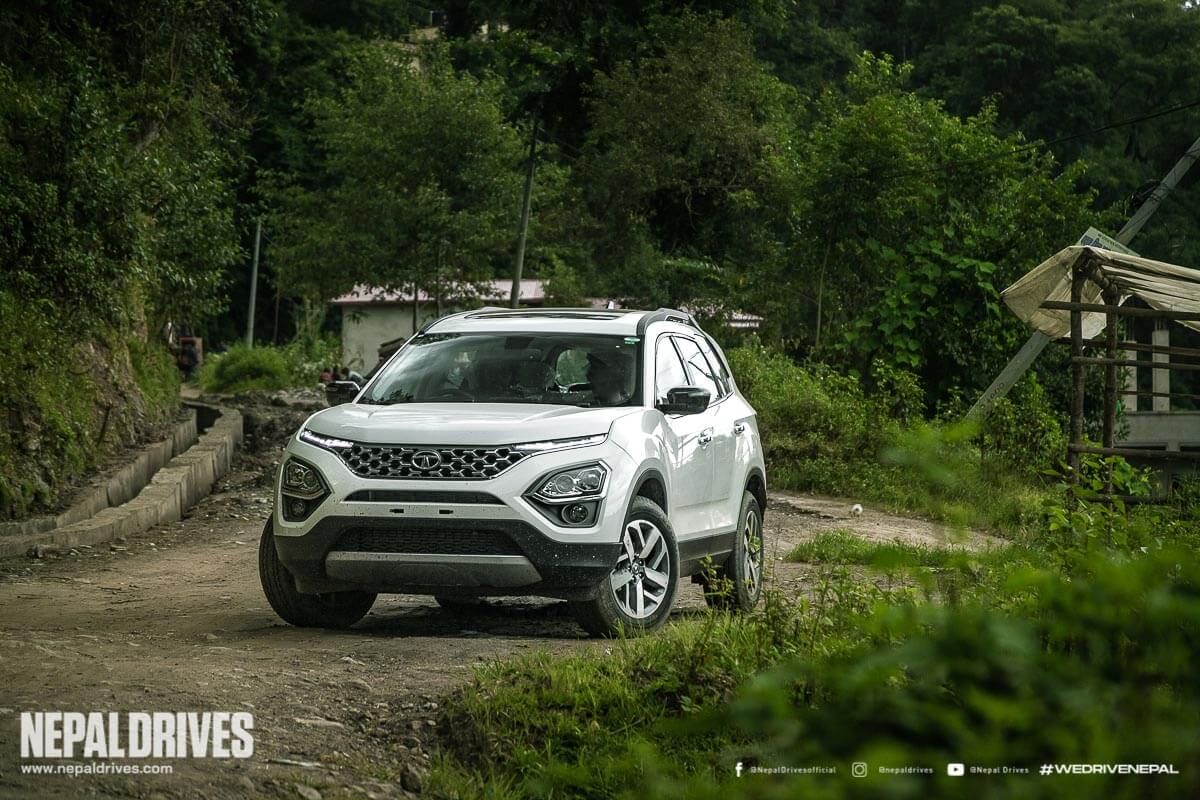
The most noticeable change is in the profile, which is where the Safari is most distinguishable. While the wheelbase is the same as the H5’s the rear of the Safari extends to accommodate the third row of seats. Unlike the H5, the Safari stays true to its origins and sports a more upright tail. It is a precise and purposeful design that might not have too many edgy elements but definitely commands perceptible poise. The stepped design and Safari badging on the roof rails pay homage to the Safaris of old; the roof rails are functional on variants without sunroofs and can take a load of up to 130kgs. Variants that have a sunroof will be able to carry up to 75kgs on the roof rails. 18” machined alloy rims look stunning.
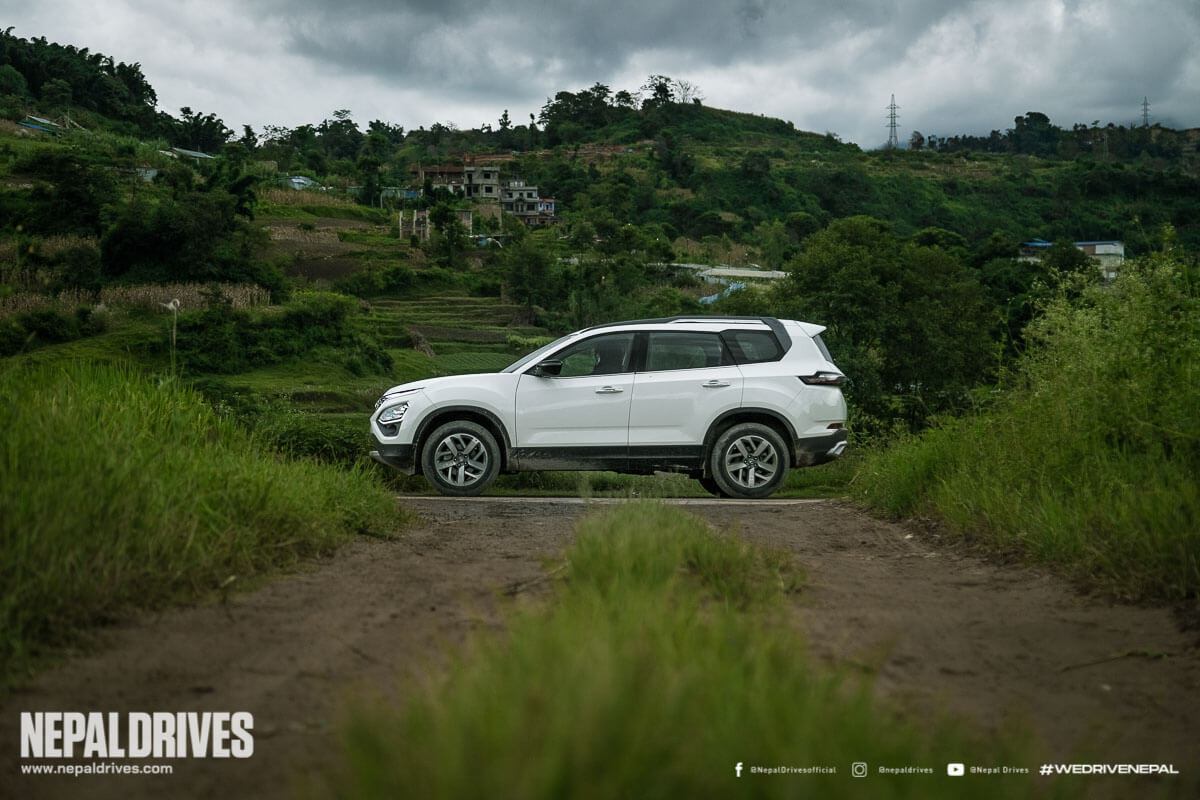
As mentioned earlier, the upright tailgate does hark back to the original styling of the Safaris. The signature twin line light LED tail lamps to look great, especially with the new edgy design of the taillights. We did notice that the integrated indicators could do with better daytime visibility for the benefit of vehicles following you in traffic. We loved the Safari badging in the bottom of the tailgate as well as the animal-themed design Easter egg in the rear windshield.
Interiors and Feature
The interiors of the Tata Safari, once again, are very similar to that of the H5. While the oyster-white color theme looks splendid, it will be a pain to keep away the stains. In fact, we had trouble keeping the white interiors clean throughout the entirety of the shoot. Nevertheless, the Benecke-Kaliko draped oyster white perforated leather upholstery provides a sense of opulence. For the seats, you get a 6 seater and 7 seater option (except for the base variant). With the 6 seater variant, you get captain seats instead of bench seats in the second row. Sadly, our test unit only came with bench seats; which is a shame because the captain seats looked very comfortable.
Still, the bench seats of the Tata Safari are very comfortable. They provide good support and you have plenty of headroom and shoulder room to seat 3 adults in the second row. Access to the third-row seats can be accessed by dropping and tumbling the door side seat of the second row. The third-row seats have less cushion and offer less support; headroom is just about adequate and the raised floor means that passengers will have to be seated in a knees-up position. But, for third-row standards, the Safari provides decent comfort with adjustable headrests and dedicated AC vents.
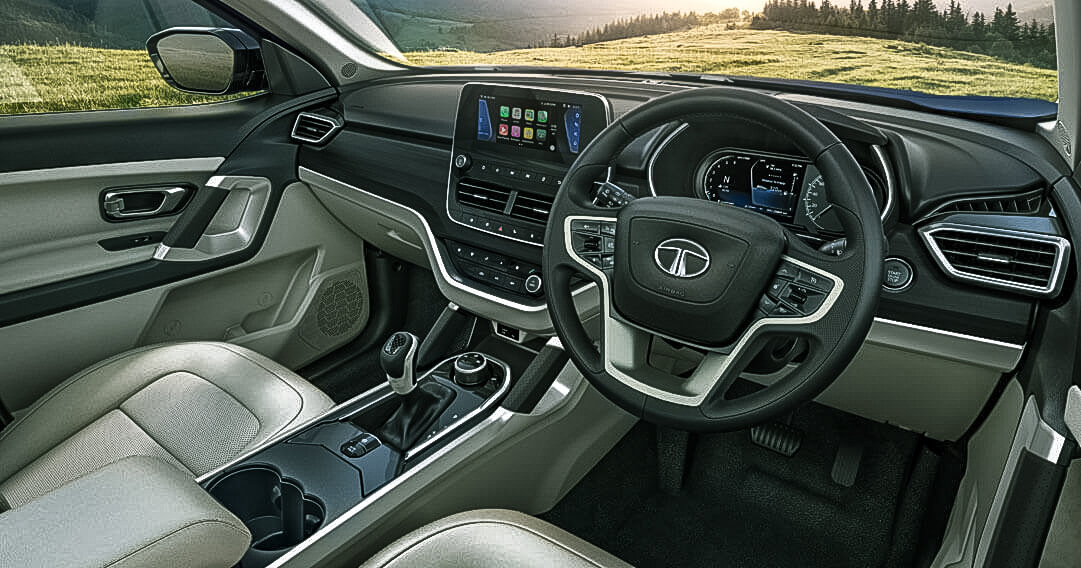 Tata Motors
Tata Motors
Having said that, we would still prefer sitting in the second-row seats, especially with the availability of the “boss mode” through which you can move the front passenger seat right up front and get acres of legroom. To get the most out of the experience, we suggest going on a drive on a beautiful summer day and watching the clear skies move over you through the massive panoramic sunroof.
On the driver’s seat, you get a good vantage point along with a very comfortable seat that is 6 way powered with adjustable lumbar support. The dashboard gets a black top and ashwood material. The instrument cluster is clearly visible and does a good job of displaying the necessary information. Apart from your speedometer, odometer, fuel gauge, and other common data you also get a tyre pressure monitoring system. The center of the dashboard houses an 8.8” floating touchscreen infotainment system with Android Auto and Apple CarPlay. While the system is decently responsive, it does feel slightly dated. We would love to see a more updated infotainment system sometime in the future.
The center console gets the most prominent change, the aircraft-inspired handbrake lever has been replaced by an electronic parking brake button. While we loved the aircraft-themed handbrake lever in the H5, it wasn’t the most practical choice, and the new button system is a better option.
Utility wise, you get loads and loads of useful compartments. The door compartments were able to fit a large 1-liter bottle of Coke, and you get a cooled glovebox in the center console. The third row also gets a cup holder, compartments to hold small items, and USB ports. Boot-space comes in at 750 liters, but with the third row up, boot space is a claustrophobic 73 liters. So if you’re heading out on a road trip with 7 people on board, the luggage needs to go on the roof. Remember, the roof rails can take up to 75kgs on variants with a sunroof and 130kgs on those without. The 9 JBL speakers also come to good use when you’re playing your favorite tunes during your road trips.
Performance
Speaking of road trips, we could see ourselves taking the Tata Safari out on an epic drive across the country. The 2.0 L Kryotech Turbocharged diesel engine churns out 168BHP of peak power and 350 Nm of sweet sweet torque. Our test unit had this engine mated to a 6-speed manual transmission. While the gearshifts were decently slick and we managed to get the most out of each gear, the automatic transmission would still be our first choice. Nevertheless, on the open roads, the Tata Safari performs well and feels eager to chip away at the kilometers. Tata Motors has managed to keep noise volume levels contained which adds to the comfortable driving experience of the Safari.
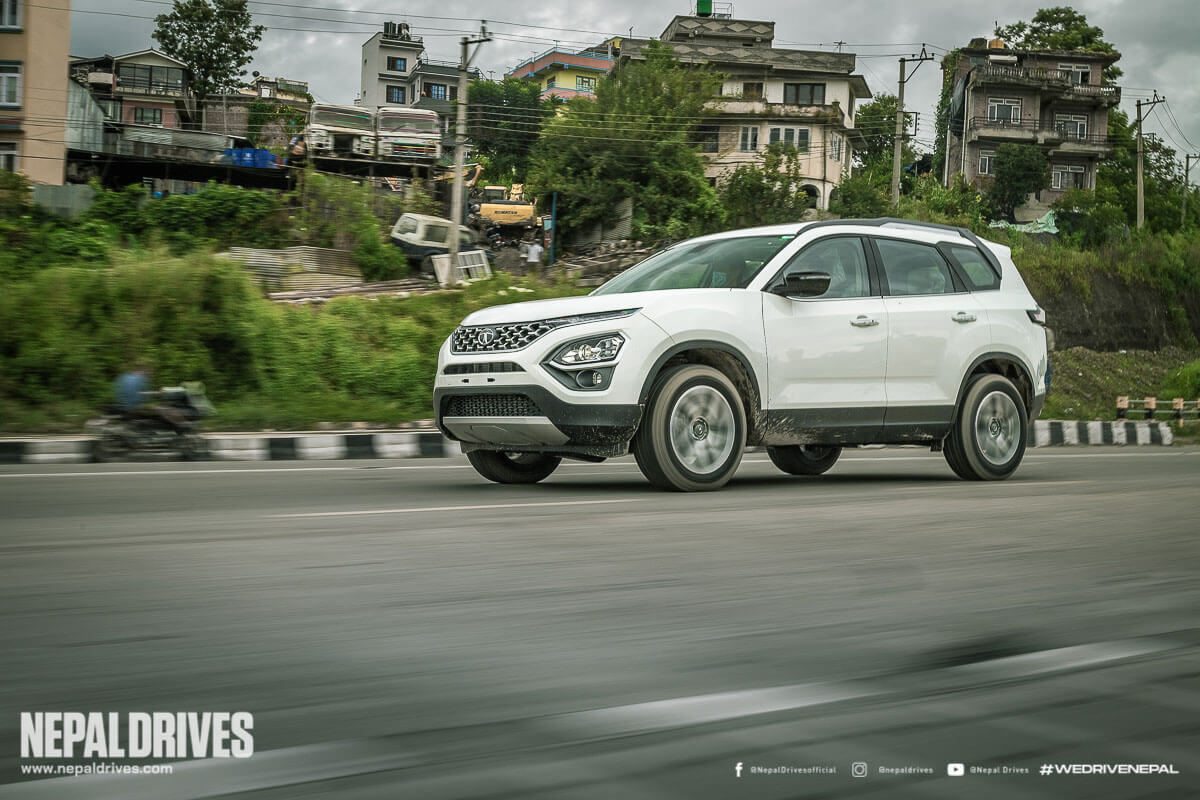
You get 3 driving modes to choose from, the Eco, City, and Sports mode. While we found ourselves pretty content driving in city mode, you can switch to sports mode to have a little fun. Sports mode adds a noticeable grunt to the Safari with improved throttle response and more power on tap. Similarly, if you are looking for a tamer driving experience, the eco mode is for you. Although you get significantly less power, it provides a decent drive and will fare well when you’re driving in the city.
Additional driving modes come in the form of advanced ESP terrain response modes which get wet mode, rough road mode, and normal mode. Wet Mode is designed for driving in the rain by providing better traction and handling and the Rough Road Mode optimizes the vehicle’s behavior on broken roads. Braking performance is also tuned to support rough road surfaces. In classic Tata fashion, in terms of safety, the Tata Safari hits the nail on the head. ABS & EBD, ESP, hill hold, brake disc wiping, brake pre-fill, hydraulic brake fade compensation, rollover mitigation, traction control, and cornering stability control are standard on all variants of the Safari, while the top XZ variant further gets hill descent control.
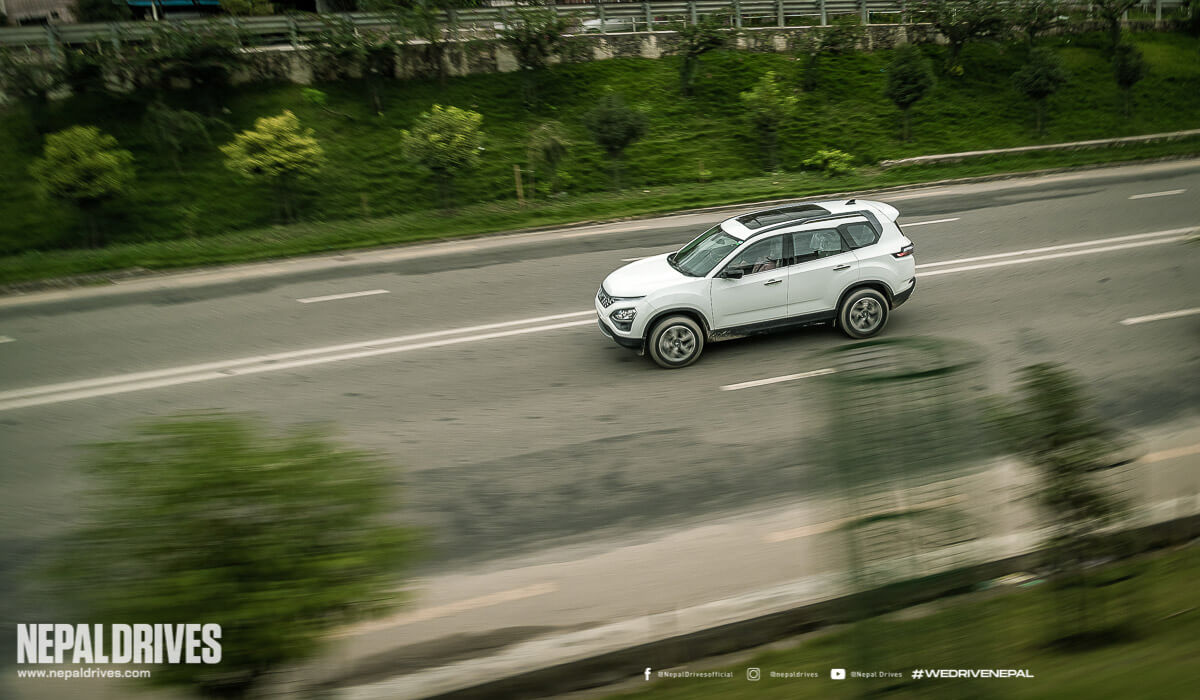
That brings us to the elephant in the room, does the Safari still drive like a Safari? The Safari Storme made use of a body-on-frame platform. While the platform was rugged, the ride and handling weren’t as good as the majority of people would like. On the other hand, the new Safari is underpinned by Land Rover’s D8-derived monocoque architecture called ‘Omega Arc’ which is also found in the H5. And like the H5, the Safari manages to bring a smile to your face when you’re driving. It feels very well composed and handles itself well. The suspension manages to round-off bumps on the road satisfactorily and has a firmness that will appease the driving enthusiasts. The steering is light, but a touch too sensitive at higher speeds.
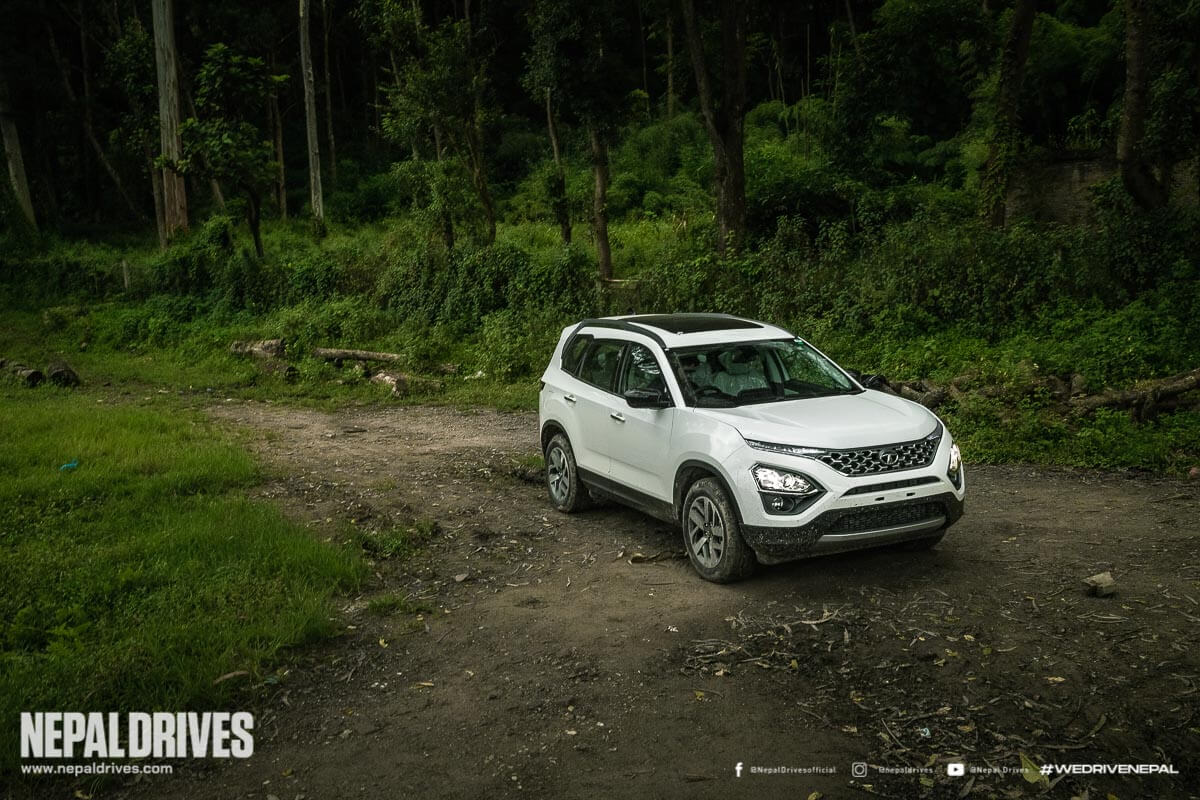
Overall, the new Safari is a great car to drive, but it loses out on the off-road capability that made the original Safari so great. You only get a FWD system which isn’t ideal for off-roading. Get this, the laden ground clearance is 143 mm, which is 10 mm lesser than the H5’s 153 mm. So, where does that put the Tata Safari in our books? Has the new Tata Safari traded its trusty go-anywhere, do-anything sneakers for a pair of shiny leather boots?
Verdict
We loved driving the Tata Safari. The massive size of the Safari does not make it the most ideal for city driving, but on the highways, you get a sense of invincibility. The premium quotient is undeniable; the plush interiors and supple driving experience make you feel like you are driving a contemporary SUV.
But, the thing is the badge on this great vehicle letters the iconic Safari name, a name that has garnered immense admiration in the automotive scene. In this respect, the new Safari is different from its rugged predecessors. You don’t get the coveted 4×4 drivetrain that made the Safari capable of taking on serious off-roading duties.
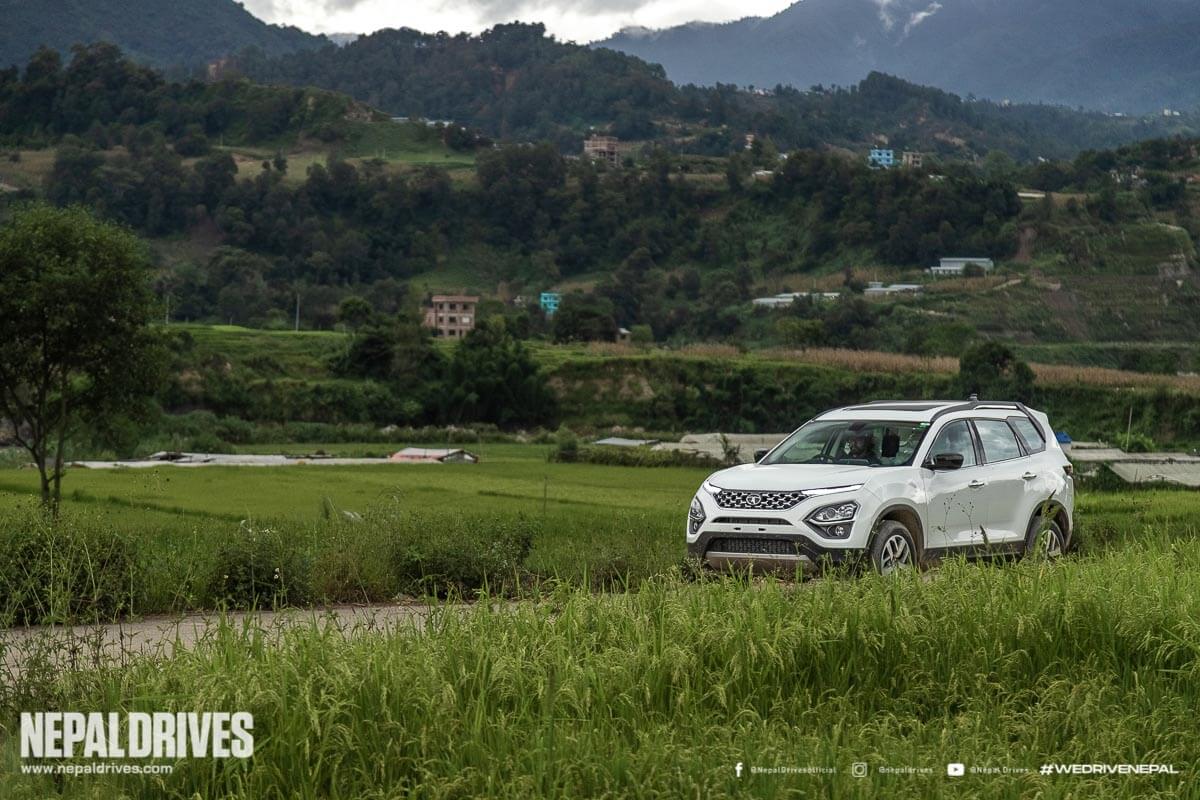
Instead, the Tata Safari takes on the avatar of something that feels like a corporate SUV. Sure, it can traverse rough terrains but it hesitates to do so. You’ll find yourself more at home on the tarmac, cruising through the highways, or sauntering through the city streets. Mind you, you do get the Safari’s Adventure persona which is Tata’s measure to assure people that the Safari has not completely sold out to become just another city-focused SUV.
The fact of the matter is; the Tata Safari has changed. It has improved. What it has lost in terms of old-school roughness it makes up for with new-age comfort and features. Which makes sense for the premium price that you pay for the new Tata Safari which starts at Rs. 81,99,000.



